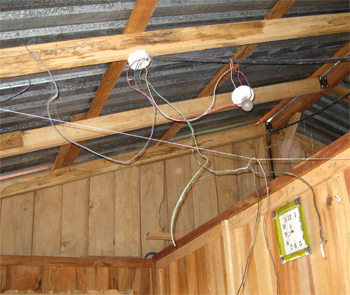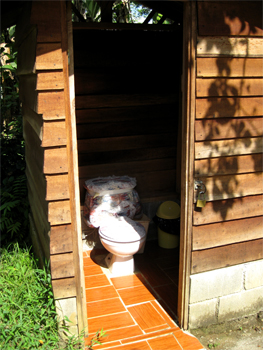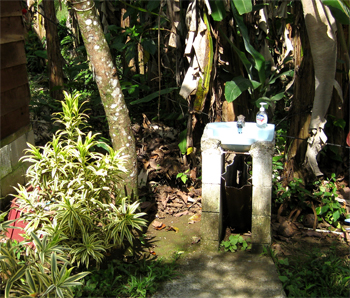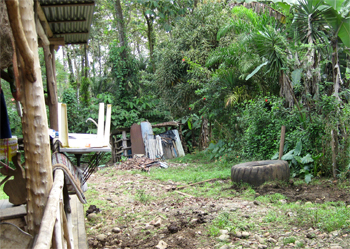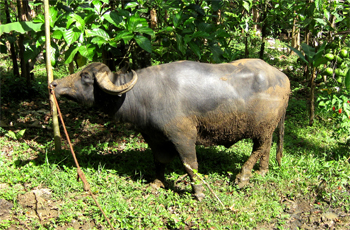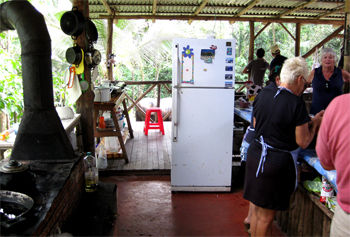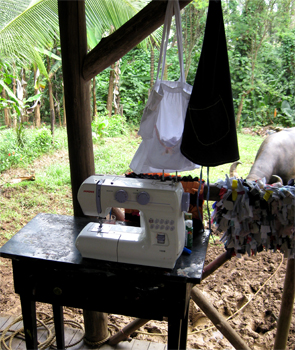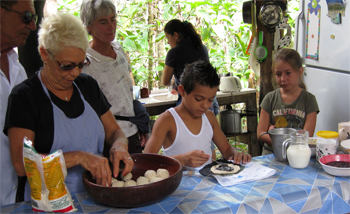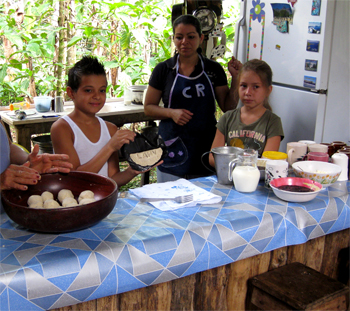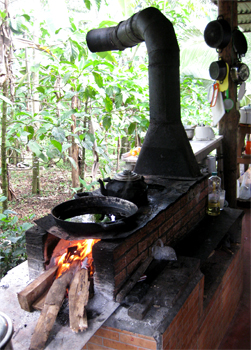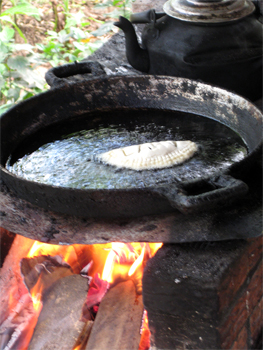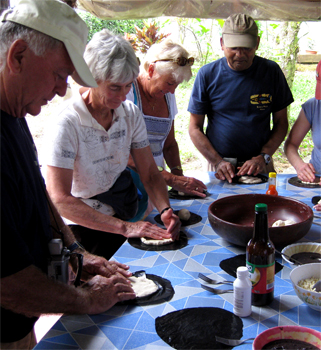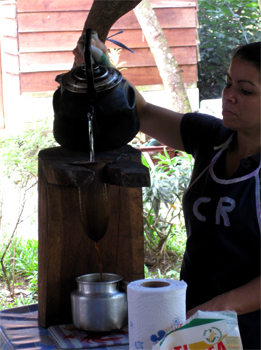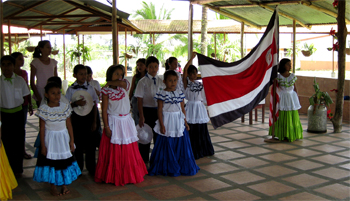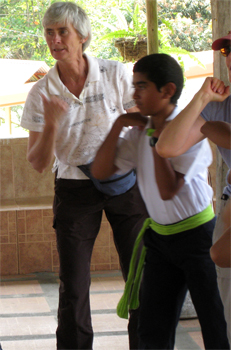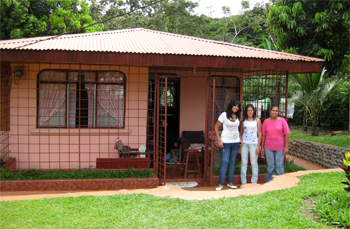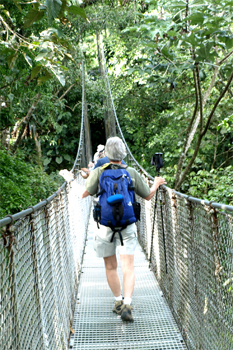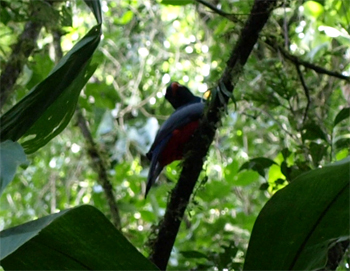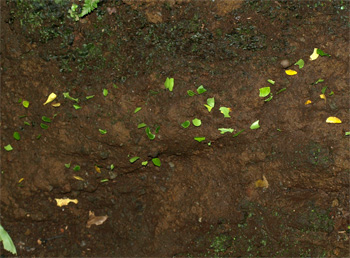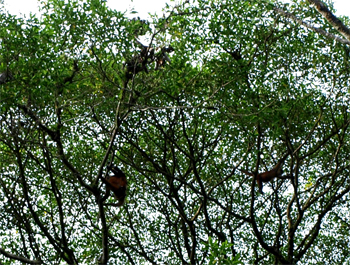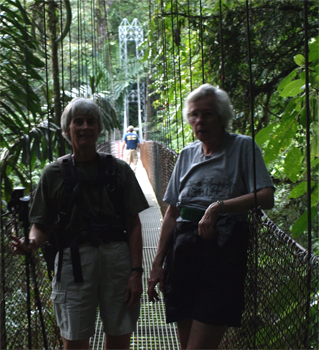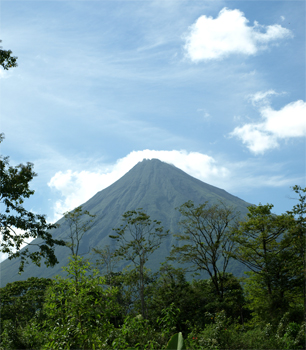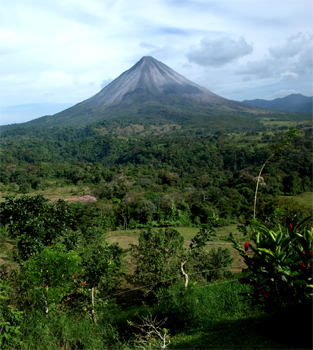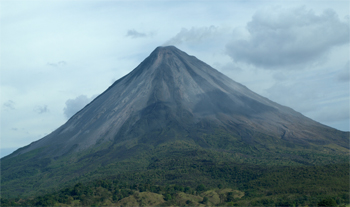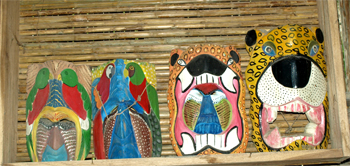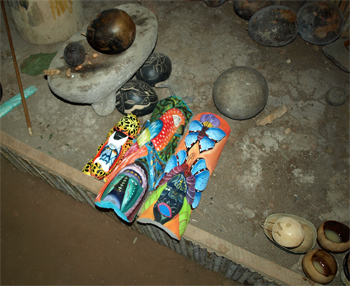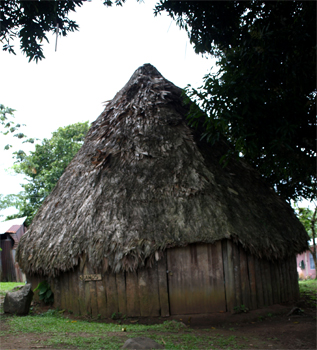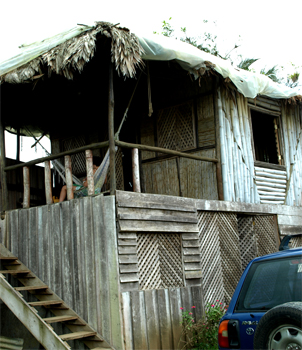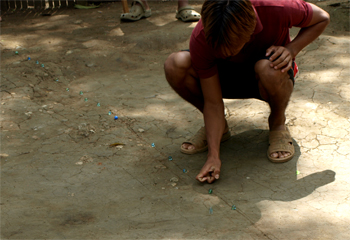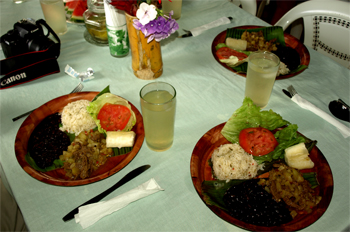Today was a very busy day. Before breakfast (6 AM) we went for a bird watch hike in the neighborhood. We saw a variety of songbirds, a few more toucans, the ever-present vultures, and a bunch of turkeys and roosters at a farm.
After breakfast we started our local adventures. The first discovery was at the home of a lady with six kids (1 to 16 years old) and the family taught us to make empanadas (turnovers). Their house had a small living room with a TV and four bedrooms not much larger than the beds. The kitchen and dining room were out back and had a roof but no walls, a wood burning stove, a single pipe faucet, one electric line, and a water buffalo tied up in the yard! We made our bean and cheese empanadas from scratch and the mother cooked them in hot oil on the wood stove. They were very good.
Local wiring |
Comforts of home
|
Outdoor sink
|
Back yard |
Water buffalo used for farm work
|
Kitchen |
For repairs and crafts to sell
|
Empanada making |
Empanada making |
Empanada making
|
Wood fired cook stove
|
Cooking the empanada |
Empanada making |
Costa Rican style drip coffee
|
Next we visited a rural school that is sponsored by OAT (and Grand Circle Foundation). The twenty-some kids, dressed in folk costumes, welcomed us, did three native dances for us, took each of us by the hand and walked us around the grounds.
We were greeted by the children |
The Hokey Pokey
|
Next was our “home hosted meal.” We divided into two groups and were dropped off at two different houses. We were greeted by the mother and family and ate a home cooked meal - ours was rice and black beans, with chunks of chicken in a sauce, salad, and plantains in caramel sauce. It was a neat little house with pretty tile floors. We were lucky to have the 16-year old daughter present and she spoke fairly good English.
|
Our luncheon hostesses
|
We got back to the hotel with enough time to regroup and then headed out for an optional tour - a two hour rain forest canopy walk - to the Arenal Hanging Bridges - and to see the side of the Arenal volcano where the lava is erupting. The best part of the rain forest walk was watching a bunch of spider monkeys jumping around in the treetops. One monkey had a baby on her back. If a jump was too long for one of the young monkeys, an adult would reach across the gap and the little one would walk across her shoulders. We heard a bunch of howler monkeys but couldn’t see them. We also heard the volcano belch a few times. We saw lots of birds, leaf cutter ants, and all kinds of vegetation. The trail was paved with lattice cinder blocks and had 14 bridges, which were open woven flooring and suspension cables and very high above the ground.
Arenal Hanging Bridges walk - A familiar notice |
Tower which supports the bridges and walkways
|
Gale on a swinging bridge
|
Trogan |
Leaf-cutter ants |
Howler monkeys
|
We call this a "we were there" photo
|
|
Both while we were on the hanging bridges walk and as we drove to a place to view the lava flow when the volcano belched, we could see wonderful views of the volcano. Unfortunately, by the time it was dark enough to have seen lava flowing, most of the cone was capped in cloud and there was nothing to see tonight. We drank a shot of coffee liquor to toast Arenal anyway. All the same, Arenal is one beautiful volcano.
Arenal Volcano
|
Arenal Volcano |
Arenal Volcano |
We did have a nice sunset, but no lava flow
|
Sunday, 2/7/10 - La Fortuna to Cano Negro - Costa Rican Election Day
After breakfast we went into La Fortuna to walk around the pretty central park and browse the shops. I bought a CR souvenir spoon for my collection and we got a wooden butterfly jigsaw puzzle for Stella (Marge’s great niece).
The next stop was at the Maleku indigenous community. We entered a stick and thatch and dirt floor one room structure that they refer to as a “ranch.” This is what the locals of the current generation and earlier lived in. These are now replaced with small cement structures with corrugated metal roofs - and TV antennas attached to a bamboo pole outside. We entered the thatched hut and had a presentation by a 23-year old native. There are about 400 indigenous Maleku and they make the school kids learn the native language and customs as a school subject that must be passed to move to the next grade. She explained (as Leo translated) about the decorated gourds, balsa wood masks, drums and “water” sticks (pebbles inside a bamboo tube that sound like running water when turned upside down). They are made in the community and bring some money to the village. We sampled the native drink, chachi, made of fermented boiled corn, sugar cane, and water. It was something we will not be indulging in!
|
|
Balsa wood masks |
Balsa wood masks
|
Drums
|
Stick and thatched structure |
Stick and thatched structure
|
Shooting a marble |
We walked around the little community and watched five boys playing marbles. They used a shooter to hit the marbles off a line drawn in the dirt rather than out of a circle as we did as kids. We ate the lunch they provided for us - beans and rice, a slice of tomato and lettuce, and beef with squash served on a banana leaf. We had watermelon for dessert.
|
Lunch
|
We drove on to Cano Negro and the wetlands. It is time to describe the roads! Half of the miles today were over narrow two-lane, paved roads. The other half on dirt and river rock spine jarring paths I hate to call a road. Top speed on the dirt roads is 15 to 20 MPH. The bridges on the roads are nearly all only one lane - one direction must yield, the other has right-of-way. Some of the bridges on the dirt roads are planks with no side rails and only as wide as our little bus. Thank goodness our driver, Jose, is very good. A dirt road won’t be considered for paving until enough people need to travel it and bus service begins on it. It seems like the country has a very good, local bus service.
Today again the scenery was cattle, dairy, or crops. The fences along the road and pastures are “living fences” - corn plant or poro or blackwood or gumbo-limbo sticks are put in as posts and wire is strung between them. The posts soon grow roots that anchor the fence and grow branches that hide the field. The farmers come along and chop off those branches and stick them into the ground next to the original post. They soon grow and the process is repeated until the fence is nearly solid and there is no need for the wire .
| We even passed a field where the owners had created all kinds of topiary shapes from the bushes and trees |  |
Today is election day in CR. It is a riot! At every village we rode through, tables are set up for each party and decorated with the party’s colors. There are four major and three more minor parties. Our tour group decided to root for Laura for president. They waved the green and white flags out of our bus windows. Elections occur every four years and the incumbent president cannot run. Election day is party time. People are out cheering, singing, eating. The results should be known by 9 PM (the voting is over at 5:55 PM) and then the winners have celebration parties all over the countryside and the loser’s party as well. It is a fun time for them.
We stopped several times a day when Jose or Leo spotted some wildlife. We have stopped to get better looks at two-toed and three-toed sloths, iguanas, cassowary, and today we saw the rare Great Potoo. It has been great fun looking for these.
We arrived at Cano Negro (Black Canal) at 3:30. It has been a part of the wildlife preserve in the wetlands since 1984. At 4:30 we had an introduction to the preserve. The community runs several preservation projects. They incubate turtle eggs and return 30% to the water and can sell the rest. They collect butterfly eggs and care for the chrysalis until they hatch. They free some and sell others. There was a devastating fire here in 1998 and tomorrow we will plant trees that school kids will adopt and take care of. Here at the resort they use energy saving low light bulbs, recycle trash (the community women reclassify it and sell it to Kimberly-Clark). Water use is scheduled so there is no overuse.
At 5 PM we watched the Super Bowl on the satellite TV in the bar. They even set up a large screen for us.
| Return to Top | Return to Costa Rica Itinerary | Return to Dreamcatcher Home Page |
